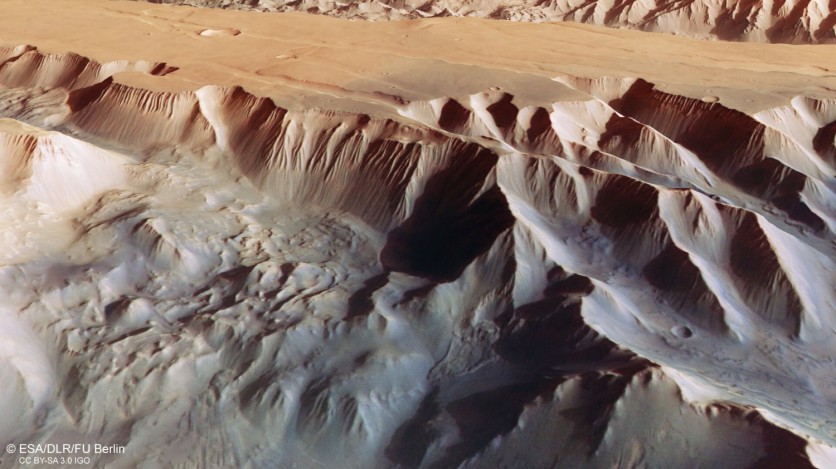Lo and behold, the grandest canyon in the solar system!
New photographs from the Mars Express mission of the European Space Agency have given us the chance to marvel at this massive canyon.
The spacecraft photographed two surface gouges that are a portion of the Valles Marineris, also known as the Grand Canyon of Mars, as it whizzed by in Martian orbit.

How Grand Is Mars' Grand Canyon?
Similar to how the Grand Canyon crosses the United States, Valles Marineris sweeps across Mars. However, US's Grand Canyon pales in comparison to Valles Marineris because of how minuscule it is.
Valles Marineris is nearly ten times longer, twenty times broader, and five times deeper than the Grand Canyon at 4000 km long, 200 km wide, and up to 7 km deep, according to ESA.
Another significant distinction between the two is that the Colorado River eroded rock to create the Grand Canyon, while Valles Marineris was formed from tectonic plate movement.

The distance from the northernmost tip of Norway to the southernmost tip of Sicily would be covered by the greatest canyon system in the Solar System, which only proves how massive this Martian canyon is!
Valles Marineris is unlike anything on Earth, which is why planetary scientists find the feature extremely intriguing.
Understanding Mar's Geological History
Sections of two chasmata, Ius on the left and Tithonium on the right, are visible in the segment photos taken by Mars Express. Scientists can learn more about Mars' geology and geological history by closely examining the features of these peculiar natural structures.
With its crust fused into a single distinct layer that encloses the planetary interior, Mars appears to be tectonically extinct at this time, according to ScienceAlert.

Scientists believe that Valles Marineris developed when Mars had tectonic plates. According to recent research, the canyon system was created long ago as a result of a plate tectonic crack that widened.
In the upper portion of the picture, tithonium is partially tinted in a darker shade. ScienceAlert noted that this might have originated from the Tharsis volcanic area, which is adjacent to the west of the chasma.
Although this is not conclusive, recent hydrogen detections in the chasma imply that a significant amount of water may be bound up with minerals below the surface.
This article is owned by Tech Times
Written by Joaquin Victor Tacla
ⓒ 2025 TECHTIMES.com All rights reserved. Do not reproduce without permission.




